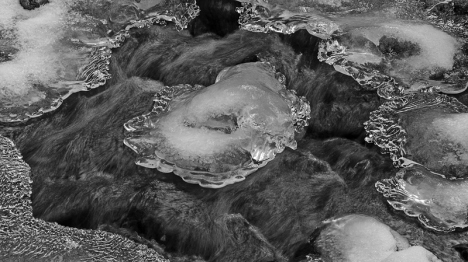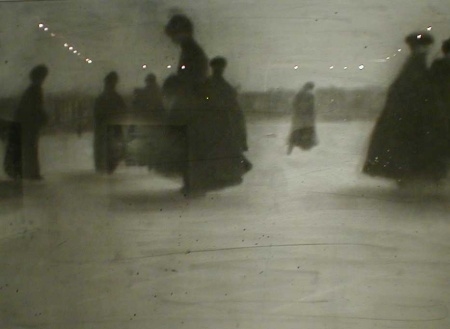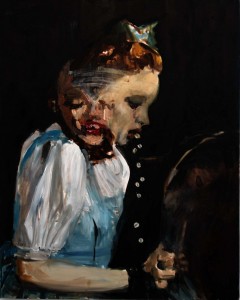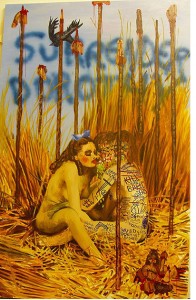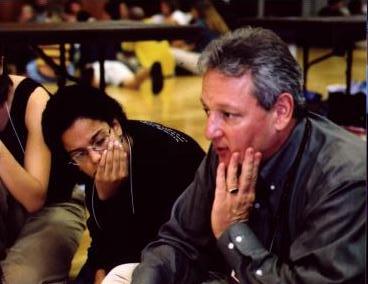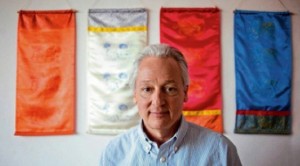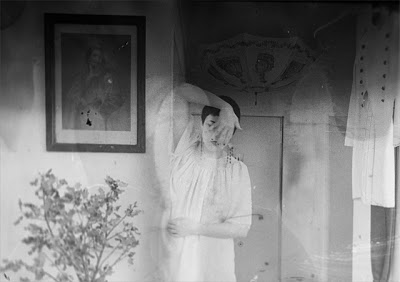.jpg)
Barbara
I wanted to start out today by introducing you to an extraordinary women, her name is Barbara Smuts. For 25 years she worked as a scientist in Kenya and Tanzania, getting to know a troop of baboons. “For 2 years, I joined the baboons at dawn and travelled with them until they reached some sleeping cliffs at dusk, 12 hours later. With occasional days off, I repeated this routine seven days a week. For several months, I lived alone and went for days without seeing another human.”
“After doing much of what they did for some times, I felt like I was turning into a baboon. A simple example involves my reactions to the weather. On the savanna during the rainy season, we could see storms approaching from a great distance. The baboons became restless, anticipating a heavy downpour. At the same time, because they wanted to keep eating, they preferred to stay out in the open as long as possible. The baboons had perfected the art of balancing hunger with the need for shelter. Just when it seemed inevitable to me that we would all get drenched, the troop would rise as one and race for the cliffs, reaching protection exactly as big drops began to fall. For many months, I wanted to run well before they did. Then something shifted, and I knew without thinking when it was time to move. I could not attribute this awareness to anything I saw, or heard or smelled; I just knew. Surely it was the same for the baboons. To me, this was a small but significant triumph. I had gone from thinking about the world analytically to experiencing the world directly and intuitively. It was then that something long slumbering awoke inside me, a yearning to be in the world as my ancestors had done, as all creatures were designed to do by aeons of evolution. Lucky me, I was surrounded by experts who could show the way.”
Barbara is a scientist, who writes complicated scientific papers for referereed journals, who speaks at conferences around the world, and publishes books. A professor who has been lauded and won awards, hugely respected. And she uses this word to describe the non-human animals that are around her. She calls them “experts.” What I hear in this word – you must be experts – is the beginning of sangha, is the beginning of us. She doesn’t step up, she steps down, this is your land, this is the place that you belong in. How can I be here with you, how can I make it OK to be here with you? She approaches the baboons very slowly, over a period of months. She is counseled by her wiser advisors that she shouldn’t have any interactions, she shouldn’t acknowledge them in any overt way, she should be, you know, like a scientist, neutral. As if scientists were neutral. But she found that neutral actually meant negative and aggressive. Imagine someone showing up in your apartment, and just hanging out there, and never talking to you, never looking at you directly, never engaging with you. What could you think? What could you possibly make of that? So while she didn’t make a thing of frolicking with the young baboons who were forever wanting to play, she met the gaze, slightly downturned, of those who approached her, she grunted just as they might grunt, and slowly they understood and she understood that they were not going to be a threat to one another. That despite their obvious differences, these were two kinds of animals who could get along. And more than that, the experts could teach Dr. Smuts, the esteemed, world renowned anthropologist, graduate from Harvard and Stanford, how to sense when the rain was coming, and this is a shared sense, it’s a sense that runs through everyone there, all the animals there, even the human animal, it’s something concrete and embodied, and it’s something that everyone participates in. It’s going to rain, I know it’s going to rain, and I know exactly how long it’s going to take me to get to that shelter over there, right over there, from the place I’m at right now, before it starts raining, so I won’t even get a drop of rain on me. I know time, I know this time, the way I know gravity.
“Another time when I had a bad cold, I fell asleep in the middle of the day, while baboons fed all around me. When I awoke at least an hour later, the troop had disappeared, all but one adolescent male who had decided to take a nap next to me. Plato (we gave the baboons Greek names) stirred when I sat up, and we blinked at each other in the bright light. I greeted him and asked him if he knew where the others were. He headed off in a confident manner and I walked by his side. This was the first time I had ever been alone with one of the baboons, and his comfort with my presence touched me. I felt as if we were friends, out together for an afternoon stroll. He took me right to the other baboons, over a mile away. After that, I always felt a special affinity for Plato.
One experience I especially treasure. The Gombe baboons were traveling to their sleeping trees late in the day, moving slowly down a stream with many small, still pools, a route they often traversed. Without any signal perceptible to me…” Can you hear in this phrase an echo of the moment that each member of the troop feels as the rain begins to gather? It is a shared understanding, an understanding that in the instance of the impending rain, they share not only with each other, they are interdependent not only with each other, they are experiencing a kind of samadhi not only with each other, but they are experiencing interdependence with the sky, with the clouds, with the rain. This is what I think Barbara Smuts means when she names them “experts. “They are “experts” at exactly this form of samadhi, all of them moving as one form, one body, to seek shelter from the rain that has not quite arrived, but they feel the rain, they feel the space before the rain arrives with such precision, with such a certain touch, as if it was already raining, as if the space before the rain was as full, as clear, as filled with touch, as the rain itself. They are samadhi in this moment, and move as one body from the place of feeding to the place of shelter. What lineage are you from? Who was your samadhi teacher? The gombe baboons in Kenya, just before the rainfall.
Let’s continue with Barbara: “Without any signal perceptible to me each baboon sat at the edge of a pool on one of the many smooth rocks that lined the edges of the stream. They sat alone or in small clusters, completely quiet, gazing at the water. Even the perpetually noisy juveniles fell into silent contemplation. I joined them. Half an hour later, again with no perceptible signal, they resumed their journey…” “No perceptible signal” to her, just like for many years Barbara felt no perceptible signal that the rain was coming exactly now. She describes this state as thinking, as analyzing, in other words, she is living in her description of the world, not the world as it is, but she is laying on top of her experience her descriptions of the world, and this description has to be dropped, this is what she is really talking about isn’t she? – how she drops her description of the world, so that she can feel what is actually happening in this moment, the fullness of this moment, and before rainfall she feels it at the same time as the experts, the baboon experts feel it. And then again when the baboons gather by the pool they are similarly led by signals, only Barbara can’t hear them, and so we might surmise that she is back in her analytic mind, she is still living in her description of the world. Why? Because the experts all act the same way, they all take their place, at the same time, by the same pool, they are all quiet, even the young ones, the ones that are never quiet. Even the youngest baboons are experiencing samadhi, integration, interdependence, the youngest baboon experiences this, or so we might imagine, we lesser apes, the human animal, the non-expert.
Here is how Barbara concludes: “Half an hour later, again with no perceptible signal, they resumed their journey in what felt like an almost sacramental procession. I was stunned by this mysterious expression of what I have to think of as baboon sangha. Although I’ve spent years with baboons, I witnessed this only twice, both times at Gombe. I have never heard another primatologist recount such an experience. I sometimes wonder if, on those two occasions, I was granted a glimpse of a dimension of baboon life they do not normally expose to people. These moments reminded me of how little we really know about the “more-than-human world.”
A sacramental procession. Is this how we might describe time itself, sometimes, especially when we’re in time, not aware of time passing, caught in a moment, swept away in a sacramental procession? Or the way that streetcars are plying their trade across a city, or a lunch counter is filling and emptying, and filling and emptying, or the way a city park flows and fills with people who come to co-habit with trees, each one as singular and unique as my best friend? If you wandered the city with a time lapse camera… –do you know what that is? It’s a technique for compressing time. You take an entire day and you squeeze it down into a single minute. How do you do that? The camera exposes one frame every twenty minutes, or ten minutes, and there are 24 frames in every second. They’re actually still photographs, do you know that? There is no motion in a motion picture, but when you show them all together, the corpse, the still lives of these pictures, shudders into motion, and an entire day is squeezed into a single minute. If you used this time compression technique and watched the contours of this room filling and empting, as if it was breathing, do you think you might find, what Barbara Smuts describes, as a sacred procession?
It’s an extra-ordinary moment that she is describing, brought to her by the experts, but when I read it I can’t help thinking about other experts, I can’t help feeling that this description extends to me an invitation – can you see what’s happening around you? Can you notice what’s actually going on, to be mindful, as they say in the trade. Are there other sacred gatherings that might appear mysterious, or perhaps not mysterious enough, that are simply overlooked, because we are too busy naming them to notice? Are there people in my life that I could turn to as experts, that I could turn into experts, who could show me how to perform samadhi, how to be fully in my life, in this moment? The way a tree offers its cooling shade, the way a child staggers out onto a lawn, as if they were seeing the infinite colours, the vast spectrum of chroma that we shrink to a single word, green, before flicking it away, without noticing.
Ice
Allow me please another moment of reading, another excerpt, this time from Gabriel Garcia Marquez’s novel One Hundred Years of Solitude. It’s the end of the first chapter, the circus has come to town, and dad and his two kids are standing in front of a gypsy that’s come from a long, long way away, to the small speck of a town called Macondo. Dad is led to the centre of the tent where a giant with a hairy torso and a shaved head waits, standing watch over a pirate chest. Marquez writes, “When it was opened by the giant, the chest gave off a glacial exhalation. Inside there was only an enormous, transparent block with infinite internal needles in which the light of the sunset was broken up into coloured stars. Disconcerted, knowing that the children were waiting for an immediate explanation, Jose Arcadio Buendia ventured a murmur:
“It’s the largest diamond in the world.”
“No,” the gypsy countered. “It’s ice.”
Jose Arcadio Buendia, without understanding, stretched his hand toward the cake, but the giant moved it away. “Five reales more to touch it,” he said. Jose Arcadio Buendia paid them and put his hand on the ice and held it there for several minutes as his heart filled with fear and jubilation at the contact with mystery. Without knowing what to say, he paid ten reales more so that his sons could have that prodigious experience. Little Jose Arcadio refused to touch it. Aureliano, on the other hand, took a step forward and put his hand on it, withdrawing it immediately. “It’s boiling,” he exclaimed, startled. But his father paid no attention to him. Intoxicated by the evidence of the miracle, he forgot at that moment about the frustration of his delirious undertakings and Melquiades’ body, abandoned to the appetite of the squids. He paid another five reales and with his hand on the cake, as if giving testimony on the holy scriptures, he exclaimed:
“This is the great invention of our time.”
Sometimes the experts are a troop of baboons, and sometimes the expert is a block of ice. You know the great invention of our time, the one I’m so busy stuffing into my drink that I don’t notice, don’t have the time, the inclination, the proclivity, the attitude to feel that feeling, that, how did Barbara put it? that sacramental procession of moment after moment, as the ice drops into your glass, and there you are, face to face with the great invention of our time.
But wait, wait a minute. Aren’t we in a yoga conference? I didn’t pay my money to big up on baboons or ice. Downward facing baboons anyone? What could any of this possibly have to do with yoga?
When the word Yoga is passed between my friends it is short form for an exercise class where everyone brings their own rubber mat. But the roots of Yoga, at least as described in Patanjali’s Yoga Sutra (written nearly twenty centuries ago), makes no mention of sweat and studios. Instead, “she” (The author is fictional, little is known about her. Imagine perhaps an intersexed body collage with an always shifting facial expression that might include one of your own) asserts that there are eight “limbs” or parts of Yoga. Ashtanga: eight, limbs. The first limb is dedicated to this question of our uniqueness, and the geometries we create with others. Because we don’t have a planet of our own. Not yet.
The first limb of Yoga is ethics. Patanjali likes to call these the yamas or the restraints. If you want to change as a person, or change up a culture, the yamas are the starting blocks. The essence of psychological change is waking up to a world that doesn’t pivot around self-image. Double ditto for journeys of the spirit. By definition, spirituality means waking up to something greater than the stories we tell about ourselves. The ostensible topic of this talk is: yoga and social change. Surely this must have to do with the first limb of yoga. The question of ethics. But as you know, sound yoga practitioners that you are, that over and over again yoga works two sides of an apparent duality, in order to show, in order to demonstrate, to embody the lived experience that this apparent duality is in fact one thing, and that this one thing is really two things. So in order to get height for instance, it’s necessary to root down into your heels. The more you root down into the three bridges of each heel, the more solid you are in your foundation the more the spine can lift up out of that foundation. In other words, in order to go up, you need to go down.
So in speaking about yoga and social change, the other side, the other face, of social change (which is the first limb of yoga) is samadhi, which is the eighth limb of yoga. Sometimes, it doesn’t really happen here of course, but sometimes the eight limbs are taught as if they are stages or steps, as if we’re going somewhere, some-where, some place, you know, like heaven, like yoga heaven, where they practice the little known though much rumoured seventh series. The seventh seal, the seventh series, oh yes Dorothy, you’re in yoga heaven now, this is the emerald city alright.
The word “Yoga” derives from the root “yug,” which means to yoke or connect one thing with another. Many take the word as a verb, so Yoga becomes a way to create a connection. But everything is already inherently united. Yoga means experiencing things as they already are. Yoga might be translated as “intimacy,” or being one with everything. But sometimes we might get a little bit inflated about what our ideas of intimacy or oneness might be. On an easy night, when I’m falling back into his arms, I want to be one with pleasure, and everything that shines with beauty. But do I really want to be one with loneliness, or pain? Do we really want to open up and be one with everything? The core of the practice of Yoga is opening up to the reality of how life really happens, not the way we want it to happen, or the way we think it should happen. And to recognize that underneath all of our ideas about how we think life should go, everything is inherently intimate. We are connected with every drop of water in the glass, every plant in the garden, and with our friends in ways that are bottomless. What interests me about Yoga practice is how the various limbs of Yoga can wake us up to that level of intimacy.
The first limb of yoga, as described by Patanjali, is the yamas, or the restraints. Non-harming, honesty, not stealing, the wise use of energy, non-greed or generosity. Then there are the niyamas, sometimes named the internal restraints. Then there is asana (which in Patanjali means sitting practice, the physical posture or pose of sitting, asana literally means to sit with, to sit facing, though in our culture of personal glamour factories, asana has become a physical practice of downward/upward dogs, backbends, standing poses, etc. It’s interesting that Patanjali never says a word about almost anything that happens in a yoga studio. Though you could also say exactly the reverse: that nothing that happens in a yoga studio, not one breath, is taken outside the frame that Patanjali so helpfully lays out. That it’s all there in every pose. The fourth limb is pranayama, working in a deliberate way with the breath.
The final four limbs are states of consciousness experienced during sitting meditation, or at least, that’s how Patanjali lays them out. The fifth limb is named pratyahara, the withdrawal of the senses, an uncoupling of sense organs and sense objects. The sixth limb is called dharana or mindfulness practice where you pick an object and return to it over and over again. In dhyana, the seventh limb, we let the mind focus on anything that becomes predominant. If a sound is there, and it’s interesting, you don’t go off with it, but you notice it, and the noticing becomes the object of meditation. The eighth limb is samadhi where subject and object come together, and there is integration.
Eight rooms, eight steps, eight cities: you pick the metaphor. They’re all related of course, one flows right into another. These eight limbs can be a useful model, especially for those of us who enjoy packing each moment of our life away in separate file folders. We might imagine that one part of our life is spiritual, while another bit is more material, but that’s just words carving up whatever they touch. Our lives are psychosomatic; they’re emotional, they’re spiritual, they’re political, they’re economic. You can’t separate any of those spheres. Everything you do is emotional, spiritual and political. If we think about the mind, the body, and the body politic as interconnected, then the eight limbs that Patanjali outlines really make sense. It all begins with ethics, and includes taking care of and waking up the body, releasing the internal patterns of breathing, and then moving into deeper states of meditation that help us see though the self image that we’re totally addicted to.
So we’ve explored a little bit about baboons, and ice, and how surrendering our descriptions of the world and allowing embodied expression to open to this moment can allow us to experience samadhi, an integration of subject and object, of an entire sky as it prepares to open into rain, or a mindful rest by a pool, sitting in silence together, and then everyone getting up at the same time, or the feeling of a cake of ice. Who is your teacher? What lineage are you from? Ice is my teacher. My lineage is rivers, puddles, urine, oceans. Everything that flows is my lineage. And Samadhi, the feeling of integration, the lived embodied experience that there is no difference between this body and this body, between this breath and your breath, between my inhale and your exhale, this leads us directly into the world, into ethics. The eighth limb of yoga leads us directly into the first limb, samadhi, I think, is not a place you go and lay back inside for the rest of your life, in fact, in a startling reconsideration of the very core of Buddhist practice, Stephen and Martine Batchelor insist that the experience of awakening or enlightenment is not the goal of the eight fold path, but its beginning. If it was the goal, if enlightenment is where we’re headed, then why isn’t it the last noble truth? Instead it’s the third noble truth, to fully know dukkha or suffering, to release grasping or fusion, to come to an end to craving, and then there is the eight fold path. And where does the eight fold path lead? It leads you back into your life. It leads you back into the first noble truth. And perhaps we could imagine the eight limbs of yoga working in just this way, not step by step, but working together, in a spiral of mindfulness.
Fleet
Trungpa Rinpoche was the hard drinking, student seducer who came to America to spread the dharma and found a series of Shambhala Centres. He lived out his asymmetries with his tribe, laying out his deep practice and wisdoms and provocations. One of those who tuned in was Fleet Maull, a dedicated practitioner and senior student, who spent half the year in intensive meditation and dharma study and the other half running back and forth from Peru for suitcases full of cocaine which he would dish in the United States. The nights that never ended, the parties and all those party friends hanging on a white trail of a smile. My double life, my self my self.
By the early 1980s he became a close personal assistant to Trungpa Rinpoche and his forays into Peru were occasional, no more than twice a year, though his marriage was falling apart, and he was maintaining another “secret” household. Oh, have I introduced you to my other family? He finally quit dealing altogether, but two years later he was fingered by a couple of friends who had been arrested and he was charged with trafficking.
He was caught in 1985 and charged with trafficking. On the eve of the sentencing, he laid the whole situation out for his teacher, Trungpa Rinpoche, who knew nothing about his other lives. He considered going underground, disappearing back into Peru with his nine-year old son, who he worried he would never see again if he went to prison. His lawyer told him that he was facing a sentence of 25 years inside without parole. You know what America’s like when it comes to drugs. The war on drugs is just another way of saying yes to organized crime. Or even disorganized crime. So Fleet arranges to meet his teacher and asks him: what should I do? And after taking a while to think about it, his teacher said that he needed to stay and face the situation. He should turn himself in and practice the dharma and be his student, because if he was on the run it wouldn’t be possible to have a relationship.
“Most prisoners are doing everything they can not to experience being there. They consider their time in prison down time, as if it doesn’t really count. They find a routine: a job, some exercise, a favorite TV program, cards, bed. People are trying to kill time. But I didn’t want to throw away 14 years of my life. I was determined to be present, to learn everything I could from this, to use this as an opportunity to wake up. And I was determined to keep my heart open.
My basic practice was shamatha-vipassana meditation [calm abiding and insight meditation]. In the county jail, I would sit on my bunk. I would sit at night or early in the morning—in part because the jail was extremely hot. In the summer, they sometimes had to hose down the walls because of the heat. Then I moved to a maximum-security federal prison. For the first two years, I lived in a dormitory crowded with bunks and inmates. It was claustrophobic, filled with bodies and noise. I would sometimes do my practice late at night, when it was quietest, but I also discovered a walk-in trash closet. I would clean it up, set all the mops and brooms and trash barrels outside so somebody could get to them, and I would sit in the closet on a folding chair.
One practice that was of great help was tonglen (the practice of taking on the suffering of others and sending them relief). Prison is a world of anger, and I certainly had mine. I had a lot to be bitter about: Some close friends had turned me in; I felt that I had been intensely over-prosecuted. But I was committed not to go there. I did not want to end up an angry and bitter person. It was not who I wanted to be. I really worked on transforming all that and on cultivating an attitude of loving kindness through tonglen practice.” (The Prison Monk, an interview with Fleet Maull, Tricycle Magazine, 2004)
Fleet spent most of his time in a maximum security prison in Springfield, Missouri, and while he was there he saw that prisoners were dying of terrifying and undiagnosed illnesses at an alarming rate. As it turned out, he had arrived just in time to catch the earliest wave of AIDS casualties spreading through American prisons. Against the wishes of the administration, he set up a hospice in the prison, the first of its kind in the US. Along with a small group of inmates, he began to read to the dying, and take them out to the yard or to the chapel, and provide skilled and patient ears to listen to them. After this initiative he continued to reach out, and founded the National Hospice Prison Association, that has already set up hospices in 25 other prisons.
Can you practice? Are you practicing? This is what Fleet seems to ask me, every time I think of him. Are you practicing where you are, even in the prison of your own life, your own circumstances, in the places of your own difficulty, your own darkness, can you practice there? Because if you can practice there, then you can go and help others in their places of difficulties, you could find the tools to hold a space for them too.
Fleet Maull: Meditation After 14 Years Locked Up (17 May 2004)
The following are excerpts from an interview conducted in San Francisco between Fleet Maull and MBA Board Member, Andrew Getz and by Martha Mahony.
Here is Fleet describing what it’s like to be on the inside, what it’s like to be a prisoner. “Not knowing where to open on any level to one’s own heart, one’s sadness and regret and no way to reconnect with any real sense of being in relationship with others or a sense of community. There’s no trust… your inner world is shame, the outer world is just a reflection of that coming at you. The community outside is just demonizing you. So you just go into a cocoon of armor and live in that place of armor and aggression. And that’s what incarceration does to most people.
YH: And isn’t that really an extension of what a lot of people who end up incarcerated and many other people – many of us – are trying to recover from in the first place, is early shame?
Fleet: Yeah, absolutely.
YH: In the program that we’ve started in the juvenile halls we really try to communicate to the youth that it’s like a practice group. It’s not a group where we come in and give the answers. It’s a practice group where all of us sit together, meditate together, do some yoga together, and then share our experiences together. And, to me, something remarkable happens as soon as you create that kind of a premise. These guys even at the age of 16, 17, very defended will start to talk about – and it doesn’t take much – they’ll start to talk about their lives. It really does shift and they seem to hunger for that.
Fleet: Oh, absolutely… create the ground of community where there’s permission for them to get into – be vulnerable and expose their humanity and get authentic about their lives. They have a huge taste for that. I mean, what we see in the work we’ve done with adults in prisons through the Beyond the Release program is once people break open they have this huge thirst and passion for that kind of authenticity because they’ve been living – locked up in this shell… (the shell, the core story, the description of our lives, the story that locks us in, and locks us up) I think the best role is really some kind of facilitator who can hold a space and which you then train them how to hold the space so they all become space holders for each other. To me, that’s the way it works.”
Space holders. When I think about this question of yoga and social action, about the precept, the yama of non-harming, non-harming seems to be at the very heart of the practice of yoga, if I am you and you are me, if we are interdependent, parts of each other, if we can find ourselves as ourselves in samadhi, then it’s not possible for me to harm you. In fact, by looking after you, I look after myself. How do I look after myself? By looking after you. And how do I look after you? By being a space holder. By holding that space, that possibility, that feeling, that feeling tone. Behind the exterior, the fine shiny place that we all like to project, oh yes, I’m such a good person, but just photograph me from my good side, OK? This is how we usually present to the world, just photograph me from my good side. But behind that good side is another side, the side of the mula bhanda, the pelvic floor, the darkness, the place which holds all of the things that we can’t bear to see or to say or to admit. That’s not me, that can’t be me. How do I look after you? Perhaps through listening, by opening up my whole body to listen to this darkness, this softness underneath the shell, to hold it so carefully, with such lightness and such determination, the way Fleet held the hands of those prisoners who were dying so far from home, so far from their friends, their families, from anything they ever recognized as themselves. So far from any hope or notion of comfort or humanity. And then there is this stranger, he’s a prisoner just like you, and he’s caught up in his own shit, just like you, and he’s trying and failing and trying again, and he’s dying too, and in that recognition he’s reaching out his hand, he’s holding a space for you, and perhaps even in the last moments, in the final set of inhales and exhales, you might be able to hold a place for him, to turn him into an expert, even as he turns you into an expert, and do the old work, the ancient work, of samadhi, the me and the you joined, fused together in this moment, until that’s gone too.



